Water damage is one of the most common and costly issues homeowners face, leading to significant repair costs and potential health risks from mold. At RestoPros of Hudson County, we’re committed to helping you prevent water damage before it starts. Let’s explore the top 10 causes of water damage and practical DIY tips for identifying and mitigating problems.
___________________________________________________________________________________________________________________________
- Leaky Pipes
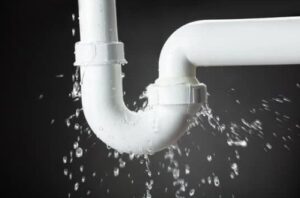
around 80% of water damage cases are attributed to pipe failure
Why It Happens: Pipes can leak due to corrosion, high water pressure, or joint damage. Over time, even a small leak can lead to severe damage.
How to Identify: Look for wet spots under sinks, on ceilings, or behind walls. A spike in your water bill can also signal hidden leaks.
DIY Mitigation: Turn off the water supply to the affected area, dry the spot, and use pipe repair tape or clamps as a temporary fix. Call a professional for a permanent solution.
- Clogged Gutters
Why It Happens: Leaves, dirt, and debris can accumulate in gutters, blocking the flow of water and causing it to overflow onto your roof and walls.
How to Identify: During rainfall, check for water spilling over the edges of your gutters or pooling near your foundation.
DIY Mitigation: Regularly clean your gutters and downspouts. Install gutter guards to reduce debris buildup.
- Faulty Appliances
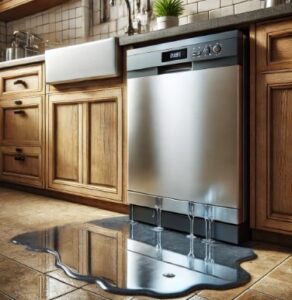
Why It Happens: Hoses and seals in washing machines, dishwashers, and water heaters degrade over time, leading to leaks or bursts.
How to Identify: Check under and behind appliances for puddles. Inspect hoses for cracks or bulges.
DIY Mitigation: Replace old or worn hoses and clean appliance filters regularly.
- Roof Damage
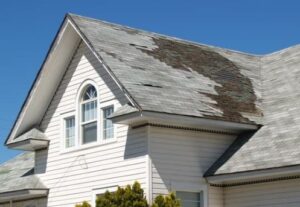
Why It Happens: Aging shingles, storm damage, or poor maintenance can lead to cracks or gaps in your roof, allowing water to seep in.
How to Identify: Look for missing shingles, water stains on your ceiling, or damp insulation in your attic.
DIY Mitigation: Replace missing or damaged shingles and seal small cracks with roofing caulk. For severe damage, hire a professional.
- Foundation Cracks
Why It Happens: Settling soil, temperature changes, or excessive moisture around your home can cause your foundation to crack.
How to Identify: Check for visible cracks in your basement walls or floors and water pooling near your foundation after rain.
DIY Mitigation: Seal small cracks with waterproof epoxy and ensure proper yard grading to direct water away from your home.
- Burst Pipes

Why It Happens: During winter, freezing temperatures can cause water in pipes to expand, leading to bursts.
How to Identify: Watch for sudden drops in water pressure or visible water damage near exposed pipes.
DIY Mitigation: Insulate exposed pipes with foam or fiberglass sleeves. During freezing weather, let faucets drip to keep water moving.
- Poor Drainage
Why It Happens: Improper yard grading or blocked drains can lead to water pooling around your home and seeping into the foundation.
How to Identify: Look for soggy areas in your yard or water stains on basement walls.
DIY Mitigation: Adjust the slope of your yard to direct water away from your home. Clear any debris from outdoor drains.
- Sump Pump Failure
Why It Happens: Sump pumps fail due to mechanical issues, power outages, or clogs.
How to Identify: Water pooling in your basement during heavy rain is a key indicator.
DIY Mitigation: Test your sump pump monthly by pouring water into the pit and checking its operation. Install a backup battery to keep it running during power outages.
- HVAC Issues
Why It Happens: Air conditioning units can produce condensation, which, if not properly drained, can lead to water damage.
How to Identify: Look for water stains near your HVAC system or dripping from vents.
DIY Mitigation: Clear the condensate drain line and ensure the system is serviced annually.
- Natural Disasters
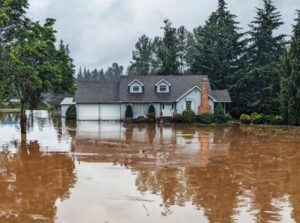
Why It Happens: Storms, hurricanes, and floods bring excessive water that can overwhelm your home’s defenses.
How to Identify: Pay attention to weather forecasts and inspect your home after severe storms for any damage.
DIY Mitigation: Use sandbags, install flood barriers, and ensure your gutters and drains are clear before a storm.
Pro Tip: Early Detection Saves Money
Homeowners can often prevent extensive water damage by catching small issues early. Regular inspections of your home’s plumbing, appliances, and drainage systems are essential. If you discover water damage that feels overwhelming or requires professional equipment, RestoPros of Hudson County is here to help. Contact us today for fast, reliable service!
By taking these proactive steps, you can significantly reduce your risk of water damage and keep your home safe and dry.
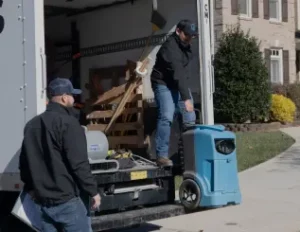
If you have any questions, need support, or are ready to take the next step, don’t hesitate to reach out to us. Our team is here to help!
📞 Call us now at 551-233-8333
We look forward to assisting you!
